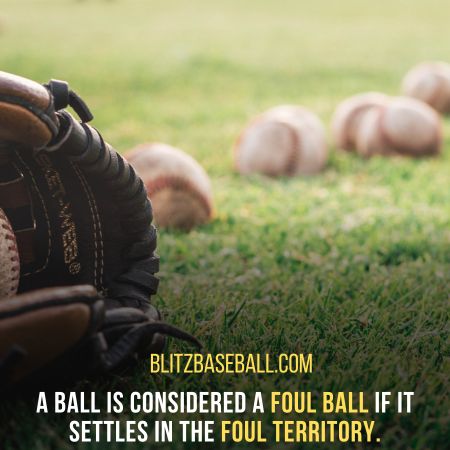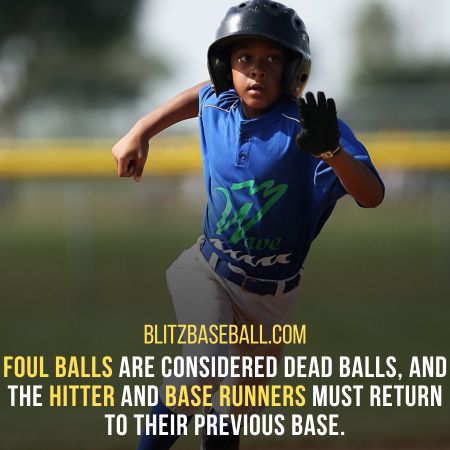Foul balls in baseball are a significant aspect of the game that often go unnoticed by casual observers. These balls, which land outside the fair playing area, have specific rules and consequences that can greatly impact the outcome of a game.
What is foul ball in baseball? In this article, we will delve into the intricacies of foul balls, exploring their definition, rules, consequences, and any controversies or changes surrounding them.
At its core, a foul ball is a ball that settles in the foul territory, the smaller area outside the fair playing area. When a batter hits a foul ball, it is considered a strike, except when they already have two strikes.
Foul balls count against the batter, requiring them to return to their previous base if they are in play. Additionally, if a fielder or baseball pitcher catches a foul ball, the batter is immediately out.
We will examine the various rules and definitions surrounding foul balls, including their impact on the hitter, base runners, and the overall game.
Furthermore, we will discuss the consequences and penalties associated with foul balls, exploring the potential strategies and implications they present for both offensive and defensive teams.
Finally, we will address any controversies or changes that have arisen regarding foul balls, particularly the recent alteration in the rule for foul tips.
By gaining a comprehensive understanding of foul balls in baseball, readers will be able to appreciate the intricacies of this often-overlooked aspect of the game.
Whether you are a casual fan or a devoted follower, this article will provide valuable insights into the unforgivable violation that is a foul ball in baseball.
Key Takeaways
- Foul territory in a baseball field is smaller than the fair playing area.
- A fair ball stays in the play and stops in the fair territory.
- A ball is considered a foul ball if it settles in the foul territory.
- Foul balls are considered dead balls, and the hitter and base runners must return to their previous base.
What Is Foul Ball In Baseball?
A foul ball in baseball refers to a batted ball that settles in the foul territory, outside the area between the foul lines that define the fair territory, resulting in specific consequences and rules for the batter and base runners.
There are different types of foul balls, including foul flies, foul pops, and foul grounders. The determination of whether a ball is foul or fair depends on its location when it settles. If the ball lands outside the foul lines, it is considered a foul ball. However, if it lands inside or on foul lines, it is considered fair.
Foul balls are crucial in the game as they count as strikes against the batter, except when the batter already has two strikes. The rules for determining foul balls are essential for maintaining the integrity and fairness of the game.

Rules and Definitions
The rules and definitions surrounding foul balls in the game of baseball have undergone changes over time, leading to debates and disagreements among players and fans. Understanding the dimensions and determinations of foul balls is crucial in accurately officiating the game. Here are some key points to consider:
Foul ball dimensions:
- Foul territory is smaller than the fair playing area, creating a boundary where foul balls can occur.
- Foul territory is segmented into two parts: between home plate and first base, and between home plate and third base.
- The whole zone between first and third bases is considered fair territory.
Foul ball determinations:
- A ball is considered a foul ball if it settles in the foul territory.
- In the infield, the umpire determines where the ball touches after being hit.
- In the outfield, the primary factor is the location where the ball lands.
Understanding these rules and definitions is essential for players, umpires, and fans to accurately interpret and enjoy the game of baseball.
Consequences and Penalties
Consequences and penalties are enforced for infractions related to the occurrence of foul balls in the game of baseball. Foul ball penalties can have a significant impact on the game, affecting both the hitter and the fielding team.

When a batter hits a foul ball, it counts as a strike, unless the hitter already has two strikes. This rule puts pressure on the batter to make contact with the ball in fair territory to avoid accumulating strikes and potentially striking out.
Additionally, if a fielder catches a foul ball, the batter is immediately out, which can end a scoring opportunity for the offensive team. Foul balls also impact base runners, as they must return to their previous base if a foul ball is caught.
These penalties and consequences highlight the importance of fair play and skillful execution in the basic rules of baseball.
Controversies and Changes
Controversies and changes surrounding the rules regarding foul balls have sparked debates and modifications in the game of baseball.
Over the years, there have been controversial rulings and historical changes that have shaped the definition and interpretation of foul balls. These changes have often been met with disagreement and arguments among players, coaches, and fans.
One such change occurred in 2020 when the official rules regarding foul balls were modified. Prior to this change, a ball that made direct contact with the catcher’s hand or body and was held was considered a foul tip.
However, the rule was modified to require the ball to be caught by the catcher in order to be considered a foul tip. This change aimed to provide clearer guidelines and reduce confusion surrounding foul ball calls.

Despite these modifications, controversies and debates regarding foul balls continue to be a part of the game of baseball.
Frequently Asked Questions
How does the presence of foul poles affect the determination of a foul ball in baseball?
The presence of foul poles in baseball affects the determination of a foul ball. Foul poles are stands placed at the outfield fence and serve as visual aids for umpires to determine if a ball has passed them, indicating a foul ball. They play an important role in accurately determining the boundary between fair and foul territory.
Can a foul ball be called if it bounces off the ground before going into the foul territory?
A foul ball can be called even if it bounces off the ground before going into the foul territory. According to the foul ball rules, the determination is based on where the ball settles, regardless of how it got there.
What happens if a fielder catches a foul ball but then drops it before it is considered an out?
If a fielder catches a foul ball but then drops it before it is considered an out, the batter is not out. However, the ball remains in play and runners can still advance based on the situation. The fielder’s responsibility is to secure the ball to complete the out. Outfield wall collisions can occur when fielders attempt to catch foul balls near the outfield fence, potentially resulting in injuries.
Are there any specific rules or consequences for foul balls that hit the outfield walls or fences?
Rules and consequences for foul balls that hit the outfield walls or fences in baseball are determined by the ball’s location when it lands. Foul poles play an important role in determining whether a ball is fair or foul.
Is there a limit to the number of foul balls a batter can hit in one at-bat?
There is no limit to the number of foul balls a batter can hit in one at-bat. However, each foul ball counts as a strike unless the batter already has two strikes. Foul ball determination depends on the ball’s location and whether it settles in the foul territory.
